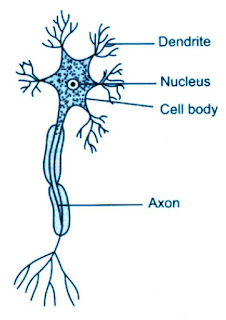Diversity In Living Organisms CBSE Class 9
Biodiversity refers to all the diverse living organisms like plants, animals and micro-organisms present on earth.
Kingdom
Plantae:
The
organisms present in this kingdom are eukaryotic, green autotrophs and
multicellular.
First they
are differentiated on the basis of the plant body they divided on the basis of
vascular systems then again divided them on the basis of occurrence of seed and
then furthered divided on the basis of seeds are covered or not.
Kingdom
Plantae divided into five divisions: (1) Thallophyta (2) Bryophyta (3)
Pteridophyta (4) Gymnosperms (5) Angiosperms.
(1)
Thallophyta: The body of these plants are not divided into root, stem and
leaves. They are thallus type. These plants do not have vascular system and
they have simple sex organs and it is single celled.
Example:
Spyrogyra, Chara, Ulothrix etc.
(2)
Bryophyta: They are known as ‘amphibians of the plant kingdom’ because they are
the first plant to live on land and in water. They are may be thalloid (i.e.
thallus like) or foliose (i.e. leaf like). True leaf and root absent. Root like
structure rhizoids is present. They are green and autotrophic but vascular
tissues are absent. They grow in moist and shady places because they need water
for fertilization.
Example:
Moss, Marchantia.
(3)
Pteridophyta: These plants are green, autotrophic and have vascular tissues.
Their body is divided into root, stem and leaves. They have multicellular
organs.
The
Thallophyta, Bryophyta and Ptridophyta are called crytogamae because they do
not flowers and seeds. The Gymnosperms and Angiosperms are called phanerogams
because they bear seeds.
(4)
Gymnosperms: They are known as naked plants because they seeds but these seeds
are not covered with fruits. They are intermediate stage between ptridophyta
and angiosperms. They are green shrubs or trees and perennials. They have cones
instead of flowers.
Example:
Cycus, pine, cedrus etc.
(5)
Angiosperms: They are known as ‘flowering plants’. They bear seeds and seeds
are protected by fruit.
Angiosperms
divided into two classes (i) dicotyledonae (ii) monocotyledonae. (Cotyledons
are called ‘seed leaves’)
(i)
Monocotyledonae: Seeds of these plants contain one seed leaf. Fibrous root
present and parallel venation present.
Example:
Wheat, rice, maize, palm, onion etc.
(ii)
Dicotyledonae: Seeds of these plants contain two seed leaves. Tap root present
and leaves have reticulated venation.
Example:
Bean, gram, mango, mustard etc.
More Related Search For You
Factorization of polynomials
CBSE Physics Class IX (9th) Motion
Polynomials (CBSE) Class 9
Matter In Our Surroundings Solution of NCERT In Text Questions-Part-1
Matter In Our Surroundings (Solution of NCERT In Text Questions - part-2)
Diversity in Living Organism CBSE
Visit Regularly My Site For New Update CBSE NCERT CLASS
More Related Search For You
Factorization of polynomials
CBSE Physics Class IX (9th) Motion
Polynomials (CBSE) Class 9
Matter In Our Surroundings Solution of NCERT In Text Questions-Part-1
Matter In Our Surroundings (Solution of NCERT In Text Questions - part-2)
Diversity in Living Organism CBSE
Visit Regularly My Site For New Update CBSE NCERT CLASS

